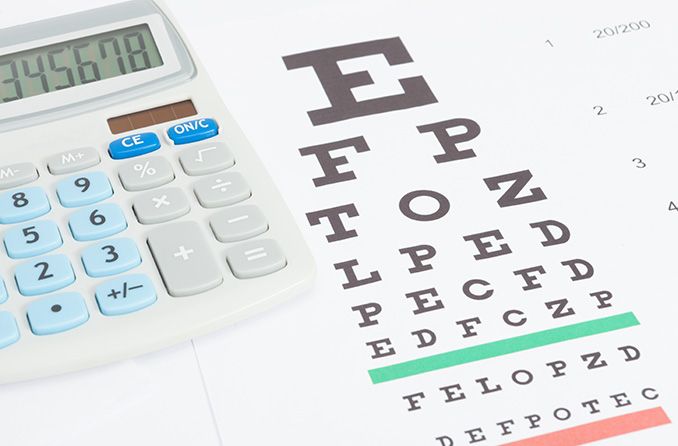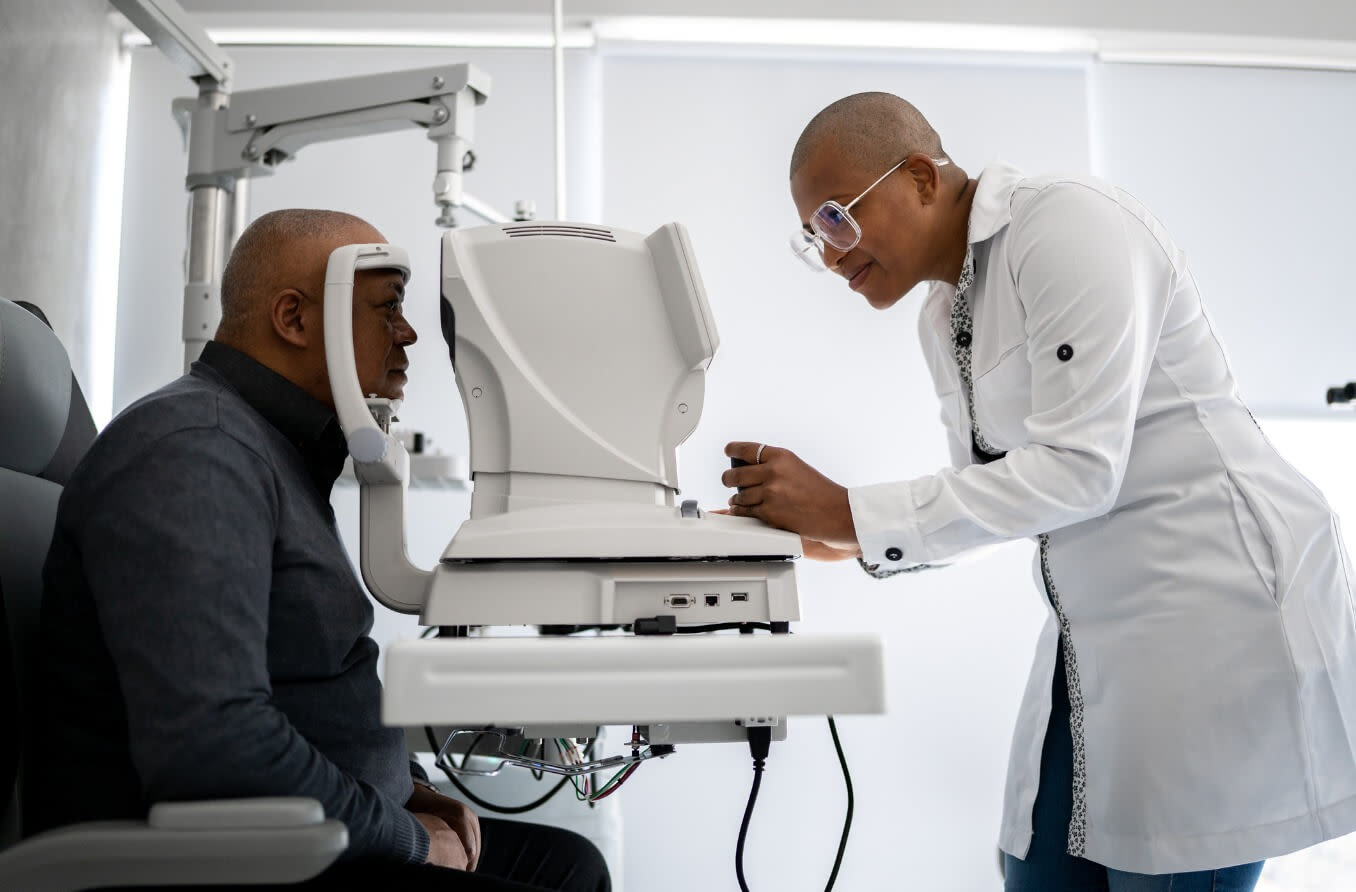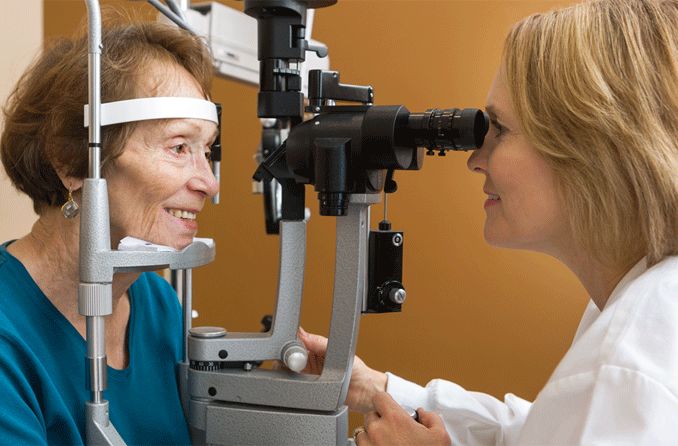What's the cost of an eye exam with vision insurance?
Vision insurance can be a great way to cut down on the cost of your next optometrist visit. When you have vision coverage, your insurer usually pays for a significant portion of the eye exam.
Some of the most common individual vision insurance plans have eye exam copays that are $10, $15 or no copay at all — but these out-of-pocket costs vary widely depending on the insurance company.
Since there are so many factors that go into each unique vision plan, such as premium costs, employers, location and in-network availability, it’s almost impossible to narrow it down to a single average number. If you already have vision insurance, the first thing to do is:
Find your copay
If you’re not sure how much your eye exam copay is, check your member card. If it isn’t listed, your insurance company’s customer service department will be able to help.
Here’s how to contact some of the most popular vision insurers:
Anthem (Blue Cross Blue Shield) Vision: 800-676-BLUE (2583)
Davis Vision: 800-999-5431
EyeMed: 866-9-EYEMED (393633)
Humana Vision: 877-877-1051
United Healthcare (UHC) Vision: 800-638-3120
VSP: 800-877-7195
If you don’t see your vision insurance provider listed above, visit our full list of vision insurance companies for additional contact details.
Even if you know your copay, it’s important to call your optometrist’s office in advance. They can look up your specific vision insurance, verify your copay and make sure your optometrist is in-network.
NOW THAT YOU KNOW YOUR COPAY, BOOK AN EYE EXAM: Find an eye doctor near you and make an appointment.
Is vision insurance worth the cost?
That depends on upfront costs and how much you plan on using it. A bit of careful planning can help you decide if a policy’s copays are worth the cost of its premiums.
Unlike medical insurance, which is commonly used for unexpected injury and illness, vision insurance is geared more toward expected expenses, such as exams and glasses.
Tom Koebel, regional vice president at Versant Health, notes a few key areas to look at when comparing vision plans: copays for exams and materials, allowances, frequencies, choices of providers, and copays for any additional lens options. Versant, which includes Davis Vision and Superior Vision, insures more than 34 million people nationwide.
Taking note of any expected costs before you sign up can help you decide if vision coverage is worth the price. Tally up the annual cost of premiums and copays for exams, glasses and contacts throughout the year, then compare it with the amount you’d spend on exams and purchases without a vision plan.
How are vision premiums and copays determined?
“Providers [eye care professionals] invariably charge different amounts based on product, brands offered and geographic location of their office,” Koebel says. “Copays provide transparent pricing and help keep costs down.”
This is particularly useful for contact lens wearers, since an updated prescription is required to buy new lenses every year. It’s also handy if you need costly upgrades like multifocal or progressive lenses.
“Vision plans with lower, fixed copays on exams, materials and lens options cause premiums to be higher than vision plans with higher copays,” Koebel says. “Typically, the premium cost increase associated with vision plans that have low, fixed copays is absolutely worth it on a dollar-for-dollar basis.”
It’s all about balancing the cost of your monthly premium with the amount you plan to spend on vision expenses throughout the year.
Do you need vision insurance for an eye exam?
Not at all — vision insurance is simply a way to reduce the cost of a comprehensive eye exam, eyeglasses and contacts for people who need them.
In our nationwide 2020 survey of eye exam costs without vision insurance, prices varied by over $200. If you don’t plan on enrolling in vision coverage, there are many affordable “self-pay” vision exam options available.
Is an ophthalmologist visit covered by vision insurance?
In most cases, no.
If an eye problem goes beyond the scope of a routine Vision exam, your optometrist may refer you to an ophthalmologist — a medical doctor better equipped for the diagnosis and treatment of eye disease.
However, this means an ophthalmologist visit often falls under health insurance coverage, depending on the nature of the visit. An ophthalmologist will likely qualify as a specialist if your medical plan includes a separate specialist copay.
Optometrists can also provide medical eye exams. If you require this type of exam instead — for example, in the presence of diabetes or glaucoma — you’ll want to factor this in when comparing or considering vision plans.
Maximize your vision insurance benefits
It’s important to maintain an up-to-date eye prescription and stay on top of your optical well-being, especially with age. Older adults are more likely to have eye problems and are at an increased risk for developing eye conditions over 40 and in the future.
When it comes to vision insurance, the key is getting the most out of your benefits. If vision coverage is right for you, copays might be able to significantly reduce the financial burden involved with caring for your eyesight.
IS YOUR PRESCRIPTION UP TO DATE? Find an eye doctor near you and schedule an appointment.







